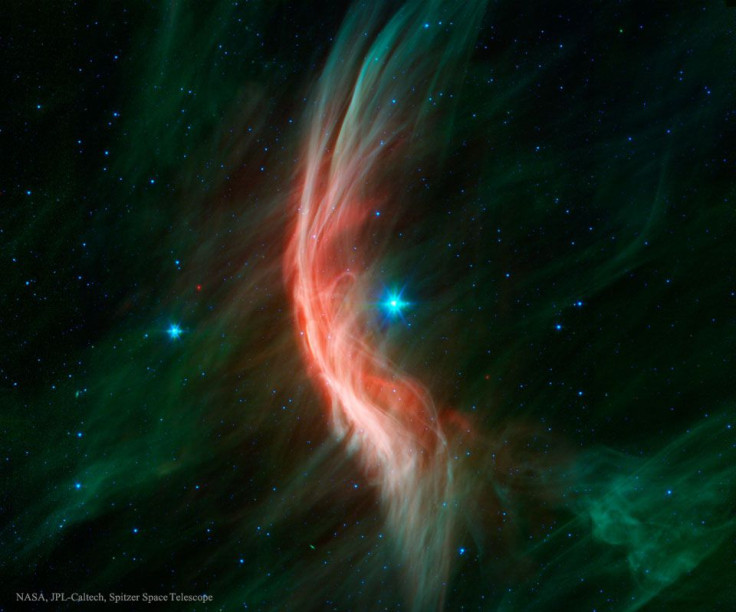NASA Shares Stunning Photo Of Runaway Star Plowing Through Space

KEY POINTS
- NASA shared a photo of a runaway star known as Zeta Ophiuchi
- Zeta Ophiuchi was ejected following a supernova event
- The star's movement is affecting its surrounding clouds of gas and dust
NASA recently shared a stunning photo of a massive star rampaging across space. The effect of the star’s behavior on its surrounding region can be clearly seen in the agency’s photo.
The cosmic object featured in NASA’s photo is a bright star known as Zeta Ophiuchi. It’s located about 366 light-years from Earth and was photographed using NASA’s Spitzer Space Telescope.
Zeta Ophiuchi appears as a bright blue star at the center of NASA’s photo. According to the agency, this star is about 20 times more massive and 65,000 times more luminous than the Sun. Astronomers believe that Zeta Ophiuchi once belonged to a binary star system. When its companion star exploded, Zeta Ophiuchi broke free from its gravitational pull and was ejected into space.
“Astronomers theorize that this stellar juggernaut was likely once part of a binary star system with an even more massive partner,” NASA explained in a statement. “It's believed that when the partner exploded as a supernova, blasting away most of its mass, Zeta Ophiuchi was suddenly freed from its partner's pull and shot away like a bullet moving 24 kilometers per second (54,000 miles per hour).”
As noted by NASA, the effects of Zeta Ophiuchi’s movement can be seen in the clouds of gas and dust surrounding it. In the photo, these cosmic clouds appear as wispy greenish streaks. However, the clouds near the star look differently, with many of them appearing brighter and redder. NASA explained that the appearance of the clouds was caused by the ultraviolet radiation emitted by Zeta Ophiuchi.
Directly in front of the star is a yellowish curved structure known as a bow shock. According to NASA, this was formed by the stellar winds generated by the Zeta Ophiuchi, which compress the gas and dust around the star.
“It's very powerful stellar wind is pushing the gas and dust out of its way (the stellar wind extends far beyond the visible portion of the star, creating an invisible 'bubble' all around it),” NASA explained. “And directly in front of the star's path the wind is compressing the gas together so much that it is glowing extremely brightly (in the infrared), creating a bow shock.”
© Copyright IBTimes 2024. All rights reserved.





















